Experts: Contact tracing best weapons to fight virus, but it’s not without flaws
Health officials say that in the absence of a vaccine, the greatest weapons against the coronavirus is contact tracing. But some say that it is a flawed method to fight the virus.
•
Jun 4, 2020, 3:16 AM
•
Updated 1,556 days ago
Share:
More Stories
0:33

US Supreme Court rejects appeal on Rutgers University COVID-19 vaccine mandate case
74ds ago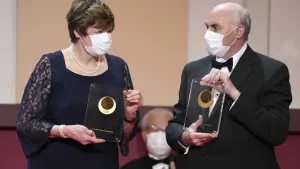
Nobel in medicine goes to 2 scientists whose work enabled creation of mRNA vaccines against COVID-19
341ds ago0:21
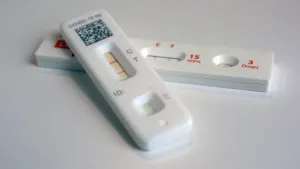
Biden administration announces $600M to produce COVID tests and will reopen website to order them
353ds ago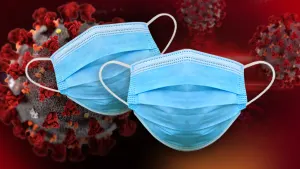
Murphy administration: No plans to implement any COVID-19 restrictions
359ds ago0:39
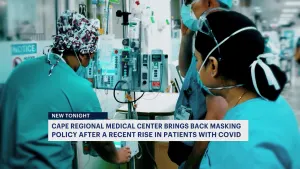
Cape May hospital asking patients to wear mask amid COVID surge
359ds ago2:57
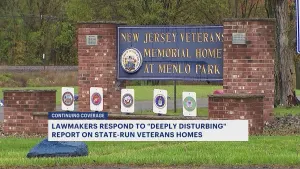
Lawmakers call for investigation, overhaul following DOJ report about NJ’s COVID response in veterans homes
362ds ago0:33

US Supreme Court rejects appeal on Rutgers University COVID-19 vaccine mandate case
74ds ago
Nobel in medicine goes to 2 scientists whose work enabled creation of mRNA vaccines against COVID-19
341ds ago0:21

Biden administration announces $600M to produce COVID tests and will reopen website to order them
353ds ago
Murphy administration: No plans to implement any COVID-19 restrictions
359ds ago0:39

Cape May hospital asking patients to wear mask amid COVID surge
359ds ago2:57

Lawmakers call for investigation, overhaul following DOJ report about NJ’s COVID response in veterans homes
362ds agoHealth officials say that in the absence of a vaccine, the greatest weapons against the coronavirus is contact tracing. But some say that it is a flawed method to fight the virus.
Paterson Mayor Andre Sayegh says that he knows how hard the city’s Health Department is working to trace anyone who had had contact with a COVID-19-positive person – not just because he is mayor, but because he was also once infected with the virus.
“They isolated me, they interviewed me. I gave them a list of close contacts – most of them were employees here at city hall,” Sayegh says.
But he says that it is not always this simple.
“Language is a barrier. Some don’t want to share with the government who they’ve been seeing. Others just don’t answer the phone,” the mayor says.
Bergen County Executive Jim Tedesco says that his county has also run into some issues.
VIRUS TRACKER: New York, New Jersey, Connecticut coronavirus cases and deaths
MORE: LIVE BLOG - Coronavirus updates from the tri-state area and beyond
MORE: New Jersey Coronavirus Dashboard
FULL COVERAGE: Coronavirus Pandemic
MORE: LIVE BLOG - Coronavirus updates from the tri-state area and beyond
MORE: New Jersey Coronavirus Dashboard
FULL COVERAGE: Coronavirus Pandemic
“They gave us phone numbers, but they’re burner phones,” he says.
The virus hit Bergen County hard early on in the outbreak. Tedesco says that he is responsible for the tracing of 35 of 70 towns. He says that a few hundred volunteers with medical backgrounds have stopped up to help with contact tracing, but that they can always use more.
“The virus is still out there. We’re finding people that are positive every day with our mobile testing,” Tedesco says.
Photos: The Heroes of the Coronavirus Pandemic
“As New Jersey begins to reopen, contact tracing is seen as critical – but it is going to be more difficult as the crowds grow.
“It’s our No. 1 tool still,” says Hamilton Township Mayor Jeff Martin.
Martin says that the town has relied largely on five nurses working overtime every day for contact tracing – the town has 90,000 residents. They have followed up with each case.
“To make sure that they’re symptom-free before they mark them as recovery. So, it’s that continued contact as well,” says Marin.
A previous battle with Legionnaires disease helped the town be prepared.
In Paterson, a meningitis outbreak and fears of food-borne sickness spurred the city to apply for a nearly $100,000 grant to expand its tracing team. This was pre-COVID-19. Sayegh says that this has helped Paterson cut projected cases of the virus in the city by about a third.
More from News 12
1:50

Family of man killed while riding scooter in Elizabeth says they ‘want justice’
2:30

Chilly morning, pleasant afternoon Sunday in New Jersey
0:33

Officials: 2 dogs killed, FedEx truck destroyed in separate South Brunswick fires
0:15

Authorities probe alleged social media threat made by Paramus High School student
0:13

Police: Green Brook man wanted for questioning in Newark shooting incident
2:16
